Themed collection Polymorphism

Polymorphism
Welcome to this CrystEngComm themed issue on Polymorphism.

CrystEngComm, 2015,17, 5128-5128
https://doi.org/10.1039/C5CE90116B
Ostwald's rule and enantiotropy: polymorph appearance in the crystallisation of p-aminobenzoic acid
The development of rational crystallisation strategies in polymorphic systems requires the experimental manipulation of both kinetics and thermodynamics.
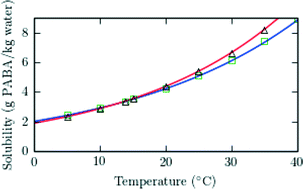
CrystEngComm, 2015,17, 5139-5142
https://doi.org/10.1039/C5CE00353A
Concomitant polymorphs of p-iso-propylcalix[4]arene
Sublimation of p-iso-propylcalix[4]arene (form IP) under reduced pressure results in the concomitant formation of two new polymorphs (forms IIP and IIIP).
![Graphical abstract: Concomitant polymorphs of p-iso-propylcalix[4]arene](/en/Image/Get?imageInfo.ImageType=GA&imageInfo.ImageIdentifier.ManuscriptID=C5CE00362H&imageInfo.ImageIdentifier.Year=2015)
CrystEngComm, 2015,17, 5129-5133
https://doi.org/10.1039/C5CE00362H
Solid state structures of p-cresol revisited
Detailed analysis of the two polymorphic solid state forms of p-cresol are presented and possible transformation of the two forms are proposed.
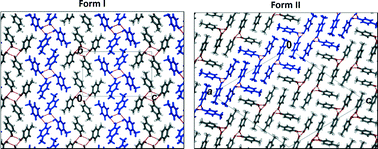
CrystEngComm, 2015,17, 5134-5138
https://doi.org/10.1039/C4CE02334J
How focussing on hydrogen bonding interactions in amino acids can miss the bigger picture: a high-pressure neutron powder diffraction study of ε-glycine
Analysis of intermolecular interactions using purely geometric criteria can be misleading: glycine exhibits apparently ideal H-bonding geometry for dimers with repulsive interaction energies.
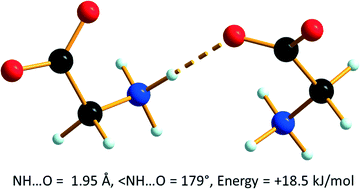
CrystEngComm, 2015,17, 5315-5328
https://doi.org/10.1039/C5CE00327J
Isomorphous three-component crystals (pseudopolymorphs of binary cocrystals) based on lattice inclusion of guests with a sterically-rigidified tetraarylpyrene host
Pseudopolymorphs of binary cocrystals of the host and cyclododecene constitute ternary cocrystals.
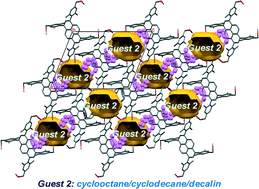
CrystEngComm, 2015,17, 5307-5314
https://doi.org/10.1039/C5CE00243E
Crystallization and characterization of cocrystals of piroxicam and 2,5-dihydroxybenzoic acid
Two cocrystals of piroxicam (PRX) and 2,5-dihydroxybenzoic acid (HBA) were found using a microfluidic cocrystal screening approach; one crystal contained an acetone (ACT) impurity.
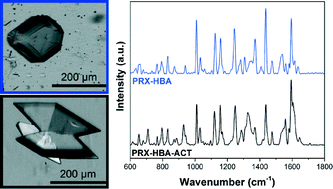
CrystEngComm, 2015,17, 5299-5306
https://doi.org/10.1039/C5CE00355E
Structural insights into the hexamorphic system of an isoniazid derivative
The compound isonicotinic acid (E)-(1-phenylethylidene)hydrazide exists in 6 different structural forms isolated through complex manipulations on a Kofler hot stage.

CrystEngComm, 2015,17, 5143-5153
https://doi.org/10.1039/C5CE00275C
In situ Raman mapping for identifying transient solid forms
In situ Raman surface mapping on a trihydrate sample provides evidence for the existence of a transient phase X on the route to its stable anhydrous polymorph I. The phase transformation events are observed in the order trihydrate → transient phase → form I.
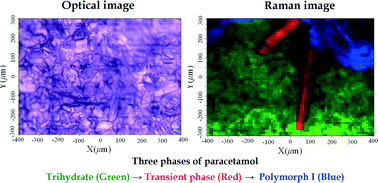
CrystEngComm, 2015,17, 5280-5287
https://doi.org/10.1039/C5CE00008D
N–H⋯π induced configurational isomerism and the role of temperature in the Z to E isomerization of 2-fluoro-N′-(3-fluorophenyl)benzimidamide
The role of temperature in polymorphism and the isolation of configurational isomers of 2-fluoro-N′-(3-fluorophenyl)benzimidamide have been investigated.
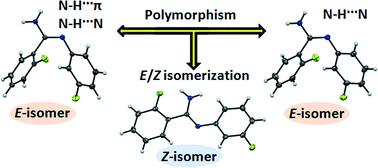
CrystEngComm, 2015,17, 5288-5298
https://doi.org/10.1039/C5CE00124B
Isotopomeric polymorphism in a “doubly-polymorphic” multi-component molecular crystal
Isotopomeric polymorphism is observed in complexes of isonicotinamide with oxalic acid, highly unusual here in that each isotopic complex is itself polymorphic, a situation of “double polymorphism”. The four polymorphic forms exhibit different degrees of hydron transfer.
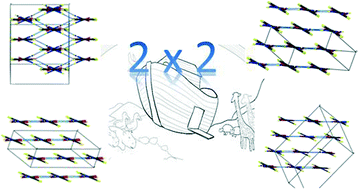
CrystEngComm, 2015,17, 5273-5279
https://doi.org/10.1039/C5CE00123D
Static and lattice vibrational energy differences between polymorphs
Lattice energy, entropy and free energy differences for over 500 pairs of known polymorphs are computed and discussed.

CrystEngComm, 2015,17, 5154-5165
https://doi.org/10.1039/C5CE00045A
Crystallization and disorder of the polytypic α1 and α2 polymorphs of piroxicam
The polytypic α1 and α2 polymorphs of piroxicam are described and it is shown that they can be crystallized controllably.
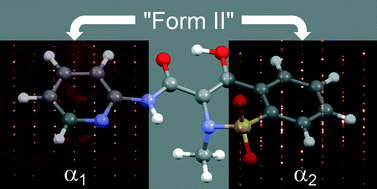
CrystEngComm, 2015,17, 5266-5272
https://doi.org/10.1039/C5CE00050E
Polymorphism in anti-hyperammonemic agent N-carbamoyl-L-glutamic acid
Solid form screen of anti-hyperammonemic drug carglumic acid (CGA) resulted in two polymorphs, Form-I and Form-II. The crystal structure of Form-I is sustained by an acid catemer synthon, whereas Form-II has an acid–amide heterosynthon. Slurry grinding, thermal stress, stability measurements, and DVS analysis confirm the thermodynamic stability of Form-I.
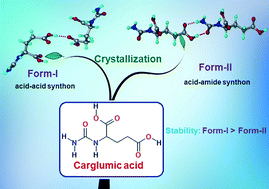
CrystEngComm, 2015,17, 5252-5265
https://doi.org/10.1039/C5CE00116A
The reluctant polymorph: investigation into the effect of self-association on the solvent mediated phase transformation and nucleation of theophylline
Evidence that theophylline forms aggregates in H-bond donor solvents, and the presence of these aggregates hinders the nucleation and phase transformation to form IV.
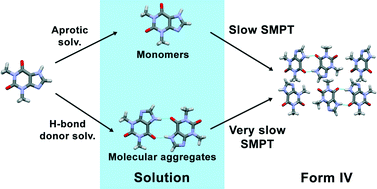
CrystEngComm, 2015,17, 5237-5251
https://doi.org/10.1039/C4CE02484B
Virtual hydrate screening and coformer selection for improved relative humidity stability
The descriptors were determined, which can be most efficiently applied to virtual screening in order to provide answers to the following questions: 1) what is the propensity to form a solid state hydrate of a pharmaceutical compound, and 2) which coformer would provide for the highest stability with respect to relative humidity conditions?

CrystEngComm, 2015,17, 5216-5224
https://doi.org/10.1039/C4CE02523G
Two polymorphs of 4-hydroxypiperidine with different NH configurations
4-Hydroxypiperidine 1 exists in two crystal forms, tetragonal 1t with axial NH and orthorhombic 1o with equatorial NH.

CrystEngComm, 2015,17, 5206-5215
https://doi.org/10.1039/C4CE02477J
Ultra-wideline 14N solid-state NMR as a method for differentiating polymorphs: glycine as a case study
14N solid-state NMR is useful for differentiating polymorphs and chemically distinct nitrogen-containing compounds. A case study of glycine is presented.
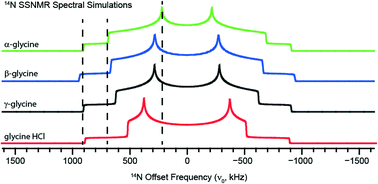
CrystEngComm, 2015,17, 5225-5236
https://doi.org/10.1039/C5CE00060B
Solid-state identity of 2-hydroxynicotinic acid and its polymorphism
The solid-state identity of 2-hydroxynicotinic acid is unveiled to be its tautomer, 2-oxo-1,2-dihydro-3-pyridinecarboxylic acid (2-ODHPCA), by both experimental and computational means. Four distinctive crystal structures are discovered of the compound.
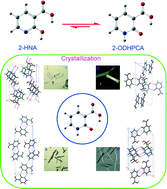
CrystEngComm, 2015,17, 5195-5205
https://doi.org/10.1039/C4CE02290D
Isostructurality and the conformational role of the 2′,3′-moieties in the diversity of lamivudine crystal forms probed in halide salts
The robustness of supramolecular synthons in two lamivudine salts with hydrobromic and hydrofluoric acids and the role of the five-membered ring conformation in the assembly of a polymorph of lamivudine hydrochloride.
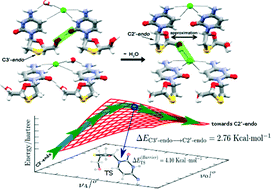
CrystEngComm, 2015,17, 5187-5194
https://doi.org/10.1039/C4CE02373K
On molecular complexes derived from amino acids and nicotinamides in combination with boronic acids
Cocrystals of boronic acids in combination with L-proline, nicotinamide and isonicotinamide have been structurally characterized.
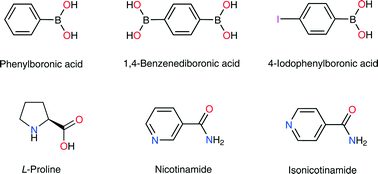
CrystEngComm, 2015,17, 5166-5186
https://doi.org/10.1039/C4CE01934B
About this collection
Guest Edited by Professors T.N. Guru Row (Indian Institute of Science, Bangalore) and Ashwini Nangia (University of Hyderabad), this issue focuses on the contemporary theme of polymorphism in all its manifestations and applications. It aims to cover the fundamental understanding of crystal nucleation and growth, energies of polymorphs and their phase transformations, polymorphism in non-ambient conditions, novel polymorphs induced by additives and hetero-nuclei, and polymorphs resulting from spatial confinement.